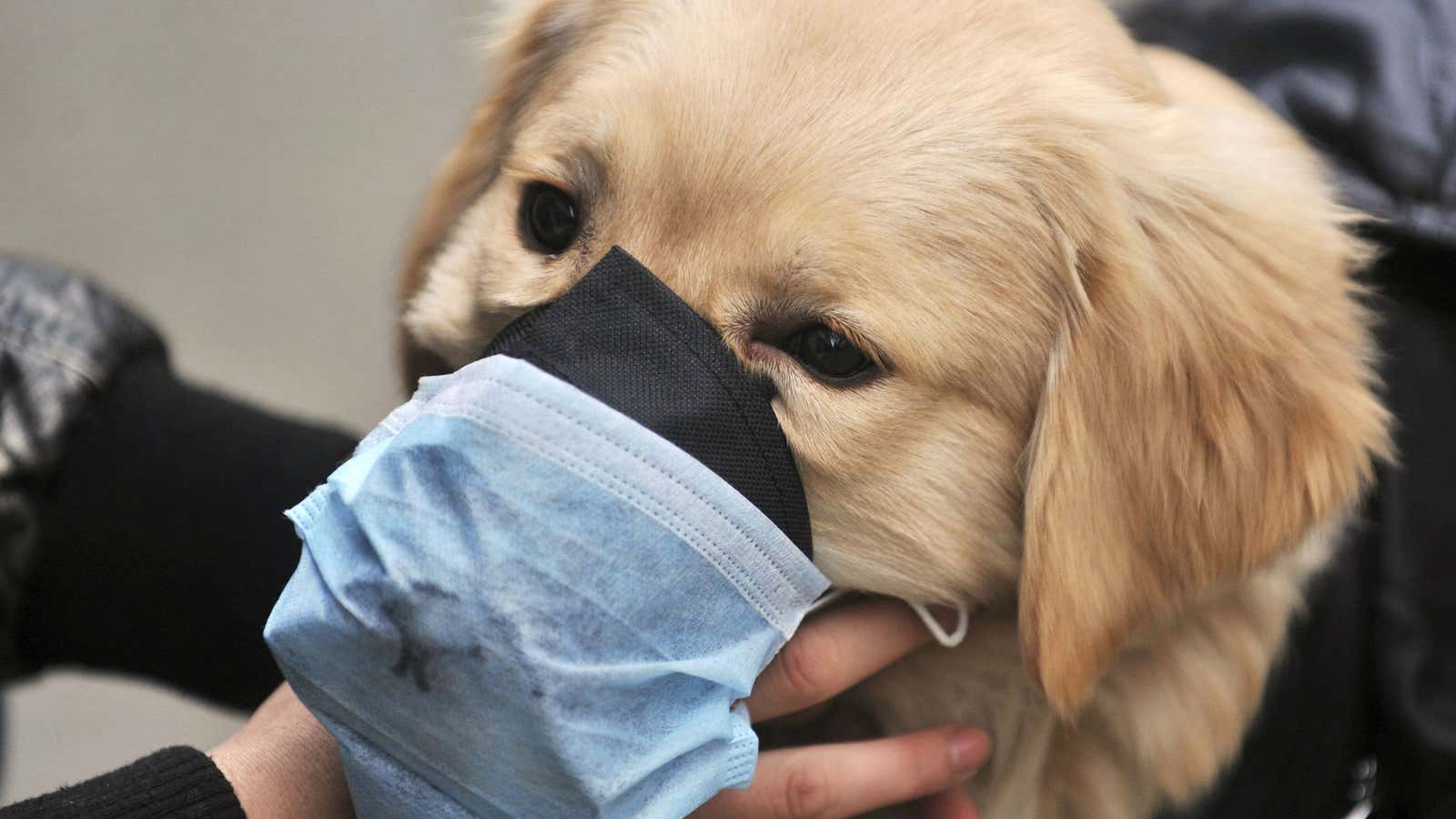This year’s flu season has been a particularly bad one in the US. The active strain of H3N2 is particularly virulent, and vaccines are just somewhat effective due to the difficult nature of predicting influenza mutations over time.
And it also hasn’t been great time for dogs. According to data collected by scientists at Cornell, there have been outbreaks of the canine influenza virus in California, Kentucky, Ohio, and Michigan, totaling more than 200 cases. Dog flu isn’t only seasonal, and spreads any time tiny aerosol particles from an infected dog make their way to another. This can happen through sneezing, coughing, nose-touching, or even barking if the motion of the dog’s mouth dislodges saliva. Humans can also be vectors for dog flu, if they are touching one sick pooch and later give pats to another without washing their hands. (There’s no evidence the dog flu can infect humans, despite the fact that it has the same name as the human flu circulating this year, because of the virus’ surface proteins.)
“There tends to be intense local transmission with dozens to hundreds of dogs infected,” Amy Glazer, a molecular biologist tracking dog flu at Cornell University, told Time.
Dog flu is a virus similar to the kinds that infect humans, in the sense that it generally causes a low-grade fever, coughing, runny nose, and general lethargy. Thankfully, it doesn’t seem to cause the gastro-intestinal distress that can come with human flu, and people can’t contract it. It can last for a couple of weeks, and although there are no canine versions of antivirals, vets can give medication to treat secondary infections dogs can pick up while their immune system is down. Dog flu doesn’t seem to be particularly lethal—it’s likely that only about 5% of dogs who contract the flu die from its effects, Michael Sal Filippo, a spokesperson for the American Veterinary Medical Association, told USA Today.
There is some concern that the same flu can spread to cats, who would presumably develop similar symptoms. Dogs with the flu should stay away from other dogs for around four weeks, because they’ll continue to shed the virus after they recover. Those at a particularly high risk of developing an infection—for example, pets that are brought to dog parks or kennels—should get vaccinated.
